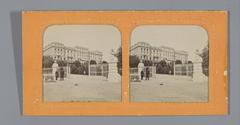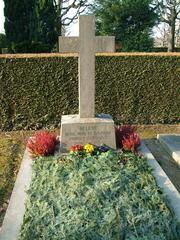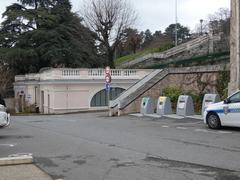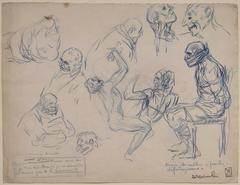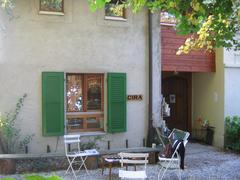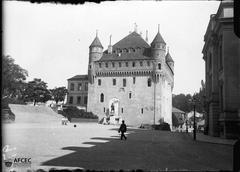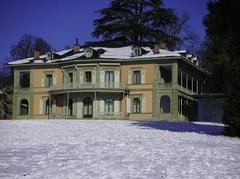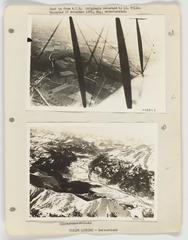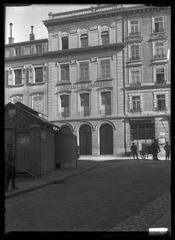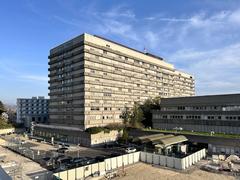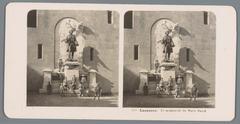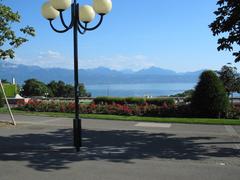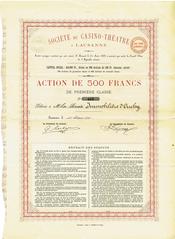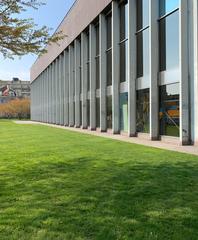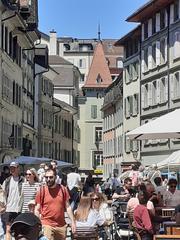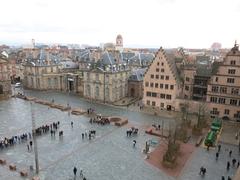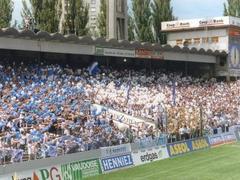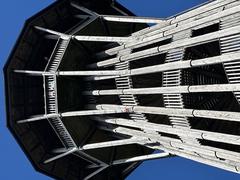Château Valency Visiting Hours, Tickets, and Travel Guide in Lausanne, Switzerland
Date: 14/06/2025
Introduction to Château Valency: History and Significance
Nestled on the scenic outskirts of Lausanne, Switzerland, Château Valency is a distinguished emblem of the region’s baroque architectural legacy and evolving cultural landscape. Built in the 18th century as a stately country residence for Lausanne’s affluent elite, the château reflects the city’s transition from a medieval ecclesiastical center to a vibrant hub of commerce, culture, and intellectual activity. Over the centuries, Château Valency has mirrored Lausanne’s social and political transformations—serving as a private home, a boarding school, a psychiatric clinic, and an educational institution. Its preserved baroque features, such as the symmetrical façade, ornate detailing, and meticulously landscaped gardens, offer an authentic glimpse into the aristocratic lifestyle of the era.
Today, Château Valency stands within Parc de Valency, inviting visitors to experience both its historical grandeur and its ongoing cultural relevance in Lausanne’s urban fabric. The château is accessible by public transport and provides a range of visitor amenities, including guided tours and cultural events. This comprehensive guide will provide all the practical and historical information you need to plan your visit, from opening hours and ticketing to accessibility and nearby attractions. For further details and planning resources, consult the Château Valency Wikipedia and the Lausanne Tourism Office.
Contents
- Origins and Early Development
- 19th-Century Transformations
- Early 20th Century: Institutional Use
- Wartime Hardships and Shifting Ownership
- Architectural and Cultural Significance
- Visiting Information
- Hours and Tickets
- Guided Tours and Events
- Accessibility and Visitor Amenities
- Directions
- Visuals and Media
- FAQ
- Key Historical Milestones
- Parc de Valency: History and Visitor Guide
- Contact and Useful Links
Origins and Early Development
Château Valency, historically known as the Château de Vennes, exemplifies Lausanne’s baroque architectural heritage. Constructed in the 18th century, it was designed as a stately home for the city’s elite (Wikipedia - Château de Vennes). The château’s baroque design is characterized by a symmetrical façade, ornate detailing, and expansive grounds—hallmarks of aristocratic residences of the period.
19th-Century Transformations
During the 19th century, the château underwent several ownership and functional changes in step with Lausanne’s socio-political shifts. Following the French invasion of Switzerland and the establishment of the Helvetic Republic, Lausanne became the capital of Vaud (Wonderful Wanderings - Lausanne History). This era saw the estate’s grounds expanded and adapted for both residential and agricultural use, reflecting changing economic and social realities.
Early 20th Century: Institutional Use
In 1903, Jean Schmidt-Mayor, a prominent Austrian hotelier, acquired the estate and constructed a large rental building, accommodating Lausanne’s growing population (Wikipedia - Château de Vennes). By 1906, the château became a boarding school for young women, highlighting the rising importance of education among the elite. The school operated until World War I.
Wartime Hardships and Shifting Ownership
World War I deeply impacted Château Valency, leading to the closure of the boarding school and financial difficulties for Schmidt-Mayor. Subsequently, the château briefly served as a psychiatric clinic before becoming the Institut Valcreuse, continuing its legacy as a center for education and social advancement (Wikipedia - Château de Vennes).
Architectural and Cultural Significance
Château Valency is notable for its well-preserved baroque architecture, including a grand entrance hall, decorative cornices, and formal gardens. Culturally, it has played multiple roles—from aristocratic residence to educational institution—mirroring Lausanne’s evolution from medieval stronghold to modern city. Its association with figures like Jean Schmidt-Mayor and its use as a boarding school underscore its significance in Lausanne’s social history.
Visiting Château Valency: Practical Information
Opening Hours and Ticketing
- Hours: Open Tuesday to Sunday, 10:00 AM – 5:00 PM. Closed Mondays and public holidays.
- Tickets: General admission is 8 CHF for adults and 5 CHF for students/seniors. Free for Lausanne residents and children under 12. Tickets can be bought on-site or online via the château’s official website.
Guided Tours and Events
- Guided Tours: Daily at 11:00 AM and 3:00 PM. Advance booking recommended in peak season.
- Events: The château hosts cultural events and exhibitions throughout the year. Check the official website for current listings.
Accessibility and Visitor Amenities
- The château is wheelchair accessible, with adapted restrooms and ramps.
- A visitor center provides maps, brochures, and audio guides.
- Photography is permitted in the gardens and exterior, but restricted inside certain rooms.
Directions
- By Public Transport: Bus line 6 stops at “Château Valency.”
- By Car: Ample parking is available.
- By Bicycle: Lausanne has an extensive cycling network.
Visuals and Media
Explore virtual tours and galleries on the official website, with high-resolution images of the château’s façade, interiors, and gardens. Images feature descriptive alt tags such as “Château Valency baroque façade” and “Gardens of Château Valency Lausanne.”
Frequently Asked Questions (FAQ)
Q: What are Château Valency’s opening hours?
A: Open Tuesday to Sunday, 10:00 AM – 5:00 PM; closed Mondays and public holidays.
Q: How much are tickets?
A: 8 CHF (adults), 5 CHF (students/seniors), free for children under 12 and Lausanne residents.
Q: Are guided tours available?
A: Yes, daily at 11:00 AM and 3:00 PM. Booking is recommended.
Q: Is the château accessible?
A: Yes, it is wheelchair accessible.
Q: Can I take photos inside?
A: Photos allowed in the gardens and exterior; restricted in some interior rooms.
Q: How do I reach the château?
A: Bus line 6 to “Château Valency” stop; parking available.
Key Historical Milestones
- 18th Century: Château constructed as a baroque country estate.
- 19th Century: Expansion and adaptation in line with Lausanne’s growth.
- 1903: Acquisition by Jean Schmidt-Mayor.
- 1906–1914: Operated as a girls’ boarding school.
- World War I: Temporary use as a psychiatric clinic.
- Post-1918: Became Institut Valcreuse, continuing its educational mission.
Parc de Valency: A Historic Green Oasis
Parc de Valency, originally part of the château’s estate, was developed in the 20th century as a public green space. Its upper esplanade offers panoramic views of the Alps and Lake Geneva, shaded by linden trees (lausanne.ch). The park features wildflower meadows, groves, a semi-wild forest, and the notable “Le Poulain” fountain by Pierre Blanc.
Sustainability and Biodiversity
Since 1992, park management has focused on sustainability—no herbicides, minimal mowing, and no irrigation—to promote biodiversity and support local wildlife.
Practical Information
- Hours: Open daily, 6:00 AM – 10:00 PM, year-round.
- Admission: Free.
- Facilities: Benches, picnic tables, children’s playground, walking/jogging paths, pétanque courts, public restrooms.
Additional Visitor Tips
- Visit in spring or autumn for the best weather and foliage.
- Bring food and water; no cafés on-site.
- Pets allowed on leash.
- For events, check the official tourism website.
Accessibility and Directions
- By Bus: Multiple lines serve the park area. Check Lausanne public transport for current routes.
- By Bike: Dedicated lanes and bike-sharing available. Helmets recommended (Evendo).
- By Car: Parking is limited. Public transport or soft mobility options are encouraged.
Events and Cultural Activities
Parc de Valency hosts concerts, art installations, and community events, especially in spring and summer (Evendo). Guided tours are occasionally available; check current schedules with Lausanne Tourisme.
Nearby Attractions
- Lausanne Old Town: Historic center with shops and cafés.
- Olympic Museum: Themed exhibits and lakeside views.
- Sauvabelin Tower: Wooden tower with panoramic views (Studying in Switzerland).
- Platform 10 Art District: Major museums and cultural venues (Plateforme 10).
Contact and Further Information
For updates, events, and accessible services, visit the Lausanne Tourism Office or contact:
Avenue de Rhodanie 2, 1001 Lausanne, Switzerland
Phone: +41 21 613 73 73
Email: [email protected]
Sources and Official Links
- Château de Vennes, Wikipedia
- Wonderful Wanderings - Lausanne History
- Lausanne Tourism Office
- This City Knows - Lausanne Architectural Landmarks
- Parc de Valency, Lausanne.ch
- Parc de Valency Visitor Information, UrTrips
- Château de Valency Visitor Information, Lausanne Tourisme
- Parc de Valency Fountain History, NotreHistoire
Final Recommendations
Château Valency embodies Lausanne’s harmonious blend of history, architecture, and green spaces. Its story—from baroque estate to public park—mirrors the city’s resilience and adaptability. Enjoy the château’s architectural beauty, stroll through Parc de Valency, and explore surrounding attractions. For a richer experience, download the Audiala app for interactive guides and event updates. Plan your visit and immerse yourself in one of Switzerland’s most captivating historical destinations.
